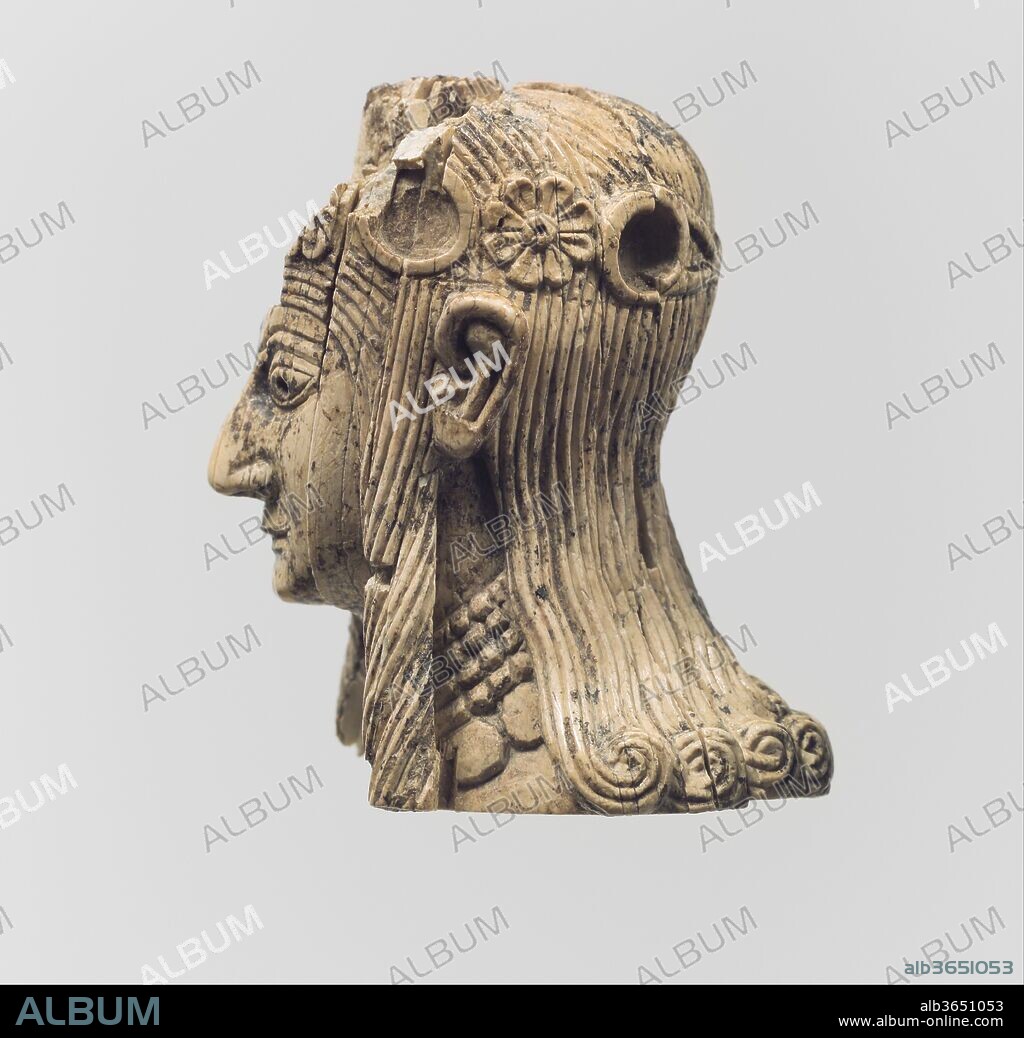alb3651053
Head of a Female Figure

|
Añadir a otro lightbox |
|
Añadir a otro lightbox |



¿Ya tienes cuenta? Iniciar sesión
¿No tienes cuenta? Regístrate
Compra esta imagen
Título:
Head of a Female Figure
Descripción:
Ver traducción automática
Head of a female figure. Culture: Assyrian. Dimensions: 1.97 x 1.22 in. (5 x 3.1 cm). Date: ca. 8th-7th century B.C..
This female head, carved in the round, was found in the Burnt Palace at Nimrud and may have originally been part of a composite statuette made of various materials and overlaid with gold foil. A square mortise cut into the bottom of this piece suggests that a tenon would have secured it to a now lost body. Part of the head has been damaged, but several features that remain, including the large, originally inlaid eyes, prominent ears, hooked nose, small mouth, and receding chin, are characteristic of North Syrian ivories. The hair falls in long individual locks, crowned by a diadem of rosettes and inlaid discs (the original colored glass or semiprecious stone inlays are now lost) tied at the back of the head. The choker-style necklace with pendants worn by this female figure is similar in form to those worn by the female figures depicted on an ivory handle also found in the Burnt Palace and in the Metropolitan Museum's collection (MMA 52.23.2).
Built by the Assyrian king Ashurnasirpal II, the palaces and storerooms of Nimrud housed thousands of pieces of carved ivory. Most of the ivories served as furniture inlays or small precious objects such as boxes. While some of them were carved in the same style as the large Assyrian reliefs lining the walls of the Northwest Palace, the majority of the ivories display images and styles related to the arts of North Syria and the Phoenician city-states. Phoenician style ivories are distinguished by their use of imagery related to Egyptian art, such as sphinxes and figures wearing pharaonic crowns, and the use of elaborate carving techniques such as openwork and colored glass inlay. North Syrian style ivories tend to depict stockier figures in more dynamic compositions, carved as solid plaques with fewer added decorative elements. However, some pieces do not fit easily into any of these three styles. Most of the ivories were probably collected by the Assyrian kings as tribute from vassal states, and as booty from conquered enemies, while some may have been manufactured in workshops at Nimrud. The ivory tusks that provided the raw material for these objects were almost certainly from African elephants, imported from lands south of Egypt, although elephants did inhabit several river valleys in Syria until they were hunted to extinction by the end of the eighth century B.C.
Técnica/material:
MARFIL
Periodo:
NEOASIRIO
Museo:
Metropolitan Museum of Art, New York, USA
Crédito:
Album / Metropolitan Museum of Art, NY
Autorizaciones:
Modelo: No - Propiedad: No
¿Preguntas relacionadas con los derechos?
¿Preguntas relacionadas con los derechos?
Tamaño imagen:
3709 x 3566 px | 37.8 MB
Tamaño impresión:
31.4 x 30.2 cm | 12.4 x 11.9 in (300 dpi)
Palabras clave:
 Pinterest
Pinterest Twitter
Twitter Facebook
Facebook Copiar enlace
Copiar enlace Email
Email
